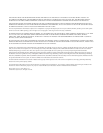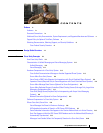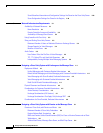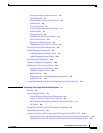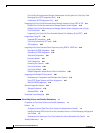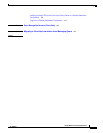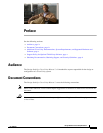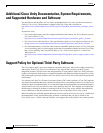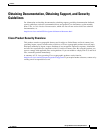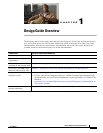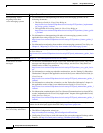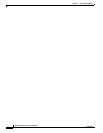
iii
Design Guide for Cisco Unity Release 5.x
OL-14619-01
CONTENTS
Preface ix
Audience ix
Document Conventions ix
Additional Cisco Unity Documentation, System Requirements, and Supported Hardware and Software x
Support Policy for Optional Third-Party Software x
Obtaining Documentation, Obtaining Support, and Security Guidelines xi
Cisco Product Security Overview xi
CHAPTER
1 Design Guide Overview 1-1
CHAPTER
2 Cisco Unity Concepts 2-1
How Cisco Unity Works 2-1
Characteristics of Unified Messaging and Voice Messaging Systems 2-2
Unified Messaging 2-2
Voice Messaging 2-2
Hardware Components of a Cisco Unity System 2-3
Cisco Unified Communications Manager or Another Supported Phone System 2-3
One or More Cisco Unity Servers 2-4
Voice Cards or PIMG Units (Required for Integrations with Circuit-Switched Phone Systems) 2-4
Expansion Chassis (Required Only for Some Integrations with Circuit-Switched Phone Systems) 2-4
One or More Message-Store Servers (Optional for Some Configurations) 2-5
One or More Dedicated Domain Controllers/Global Catalog Servers (Exchange Only, Large Voice
Messaging Configurations Only)
2-5
Cisco Unity Bridge Server (Required Only for Interoperating with Avaya Voice Messaging
Systems)
2-5
Network Connection (Optional for Some Configurations) 2-5
Software Components of a Cisco Unity System 2-6
Where Cisco Unity Stores Data 2-6
Voice Messages Are Stored in Domino or Exchange 2-6
All Subscriber Information Is Stored in a SQL Server 2000 Database 2-7
Some Subscriber Information Also Appears in the Domino Address Book or in Active Directory 2-8
Data That Appears in Both the SQL Server 2000 Database and in the Address Book/Directory Is
Automatically Synchronized
2-9
Messages from Outside Callers Are Temporarily Stored on the Cisco Unity Server 2-10




